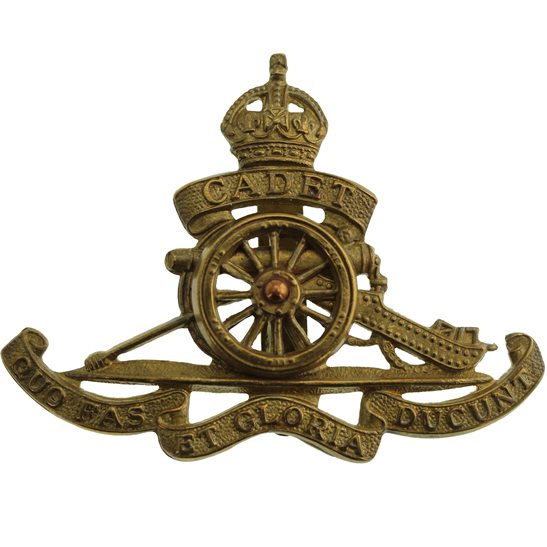Personal Details
Born: 12 August 1885 in Nantwich, Cheshire.
Family: He was the fourth of six children born to Samuel Stubbs, a bricklayer, and his wife Rhoda, nee Hawkins. He married Harriet Humpreys in 1909 in Chester, Cheshire. The couple had three children, Samuel, William and Frank.
Residence: From at least 1891 until 1911 Samuel and his family lived at 6 Chancery Buildings, Hospital Street, Nantwich. The 1919 Absent Voters` List had an address of 6 Cambrian View, Whitchurch, Shropshire for him.This was still his home in 1939.
Employment: He was a saddler and harness maker.
Died: In 1973 in North Shropshire, aged 87.
Military Details
Regiment: Royal Field Artillery
Rank: Staff Sergeant
Service Number: 741832
Date of Enlistment: Not known
Date of Discharge: Not known
Reason for Discharge: Not known
Samuel was awarded the Campaign medals (British War and Victory medals)

The British War Medal (also known as 'Squeak') was a silver or bronze medal awarded to officers and men of the British and Imperial Forces who either entered a theatre of war or entered service overseas between 5th August 1914 and 11th November 1918 inclusive. This was later extended to services in Russia, Siberia and some other areas in 1919 and 1920. Approximately 6.5 million British War Medals were issued. Approximately 6.4 million of these were the silver versions of this medal. Around 110,000 of a bronze version were issued mainly to Chinese, Maltese and Indian Labour Corps. The front (obv or obverse) of the medal depicts the head of George V. The recipient's service number, rank, name and unit was impressed on the rim.
The Allied Victory Medal (also known as 'Wilfred') was issued by each of the allies. It was decided that each of the allies should each issue their own bronze victory medal with a similar design, similar equivalent wording and identical ribbon. The British medal was designed by W. McMillan. The front depicts a winged classical figure representing victory. Approximately 5.7 million victory medals were issued. Interestingly, eligibility for this medal was more restrictive and not everyone who received the British War Medal ('Squeak') also received the Victory Medal ('Wilfred'). However, in general, all recipients of 'Wilfred' also received 'Squeak' and all recipients of The 1914 Star or The 1914/1915 Star (also known as 'Pip') also received both 'Squeak' and 'Wilfred'. The recipient's service number, rank, name and unit was impressed on the rim.

